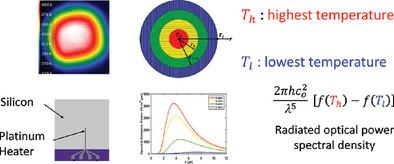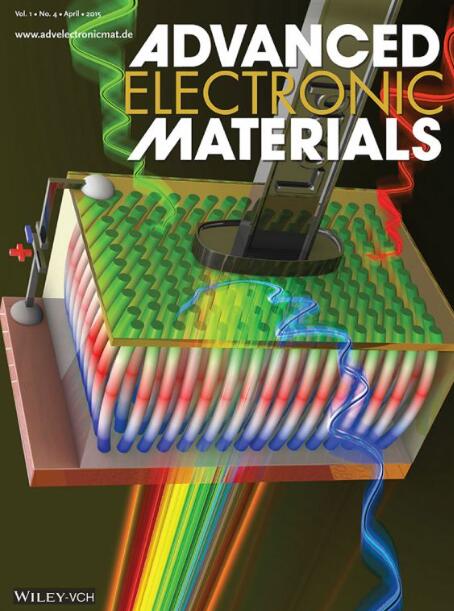芯片级红外热源中不均匀温度的影响:重新审视的黑体辐射公式与实验验证
IF 5.3
2区 材料科学
Q2 MATERIALS SCIENCE, MULTIDISCIPLINARY
引用次数: 0
摘要
微型和低成本光源是众多光学微型系统的理想之选。其中,基于几百度加热的灯丝黑体辐射的装置,完全符合普朗克定律的要求,能产生红外范围内的宽光谱。这些光源是傅立叶变换红外(FTIR)光谱学的主要兴趣所在。虽然热光源的产生很简单,但要实现精确的光强却并非易事。本文研究了不均匀温度对发射辐射的影响。考虑到温度分布并利用非相干光源的叠加原理,重新研究了微型光源的黑体辐射公式。通过将辐射源划分为多个不同温度的环形基本源,建立了一个理论模型。这就产生了有效的校正黑体辐射。在二次温度分布的情况下,得出了分析公式。为了进行实验验证,在 300 至 520 K 的温度范围内,制作了一个硅源,该硅源是在重度掺杂硅的顶部使用铂电阻微加热器制成的。本文章由计算机程序翻译,如有差异,请以英文原文为准。

Effect of Inhomogeneous Temperature in Chip-Scale Infrared Thermal Sources: A Revisited Blackbody Radiation Formula with Experimental Validation
Miniature and low-cost light sources are highly desirable for numerous optical microsystems. Among these, devices based on blackbody radiation of a filament heated at a few hundred degrees, perfectly fit with the requirements of producing a broad spectral range falling in the infrared range, owing to Planck's law. These light sources are of primary interest for Fourier transform infrared (FTIR) spectroscopy. Although thermal light production is simple, achieving precise light intensity is not a trivial task. Herein, the impact of the inhomogeneous temperature on the emitted radiation is studied. Blackbody radiation formulae are revisited for miniature sources, taking into account the temperature distribution and using the principle of superposition of non-coherent sources. A theoretical model is formulated by dividing the source into multiple annular elementary sources of different temperature. This results in effective, corrected blackbody emission. Analytical formulae are derived in the case of a quadratic temperature distribution. For the experimental validation, a silicon-based source, made of a platinum resistive micro-heater on top of heavily doped silicon, is fabricated and experimentally characterized at temperatures ranging from 300 to 520 K. The experimental results show good agreement with the model predictions in the explored wavelength range of (λ = 2.5–4.8 µm).
求助全文
通过发布文献求助,成功后即可免费获取论文全文。
去求助
来源期刊

Advanced Electronic Materials
NANOSCIENCE & NANOTECHNOLOGYMATERIALS SCIE-MATERIALS SCIENCE, MULTIDISCIPLINARY
CiteScore
11.00
自引率
3.20%
发文量
433
期刊介绍:
Advanced Electronic Materials is an interdisciplinary forum for peer-reviewed, high-quality, high-impact research in the fields of materials science, physics, and engineering of electronic and magnetic materials. It includes research on physics and physical properties of electronic and magnetic materials, spintronics, electronics, device physics and engineering, micro- and nano-electromechanical systems, and organic electronics, in addition to fundamental research.
 求助内容:
求助内容: 应助结果提醒方式:
应助结果提醒方式:


